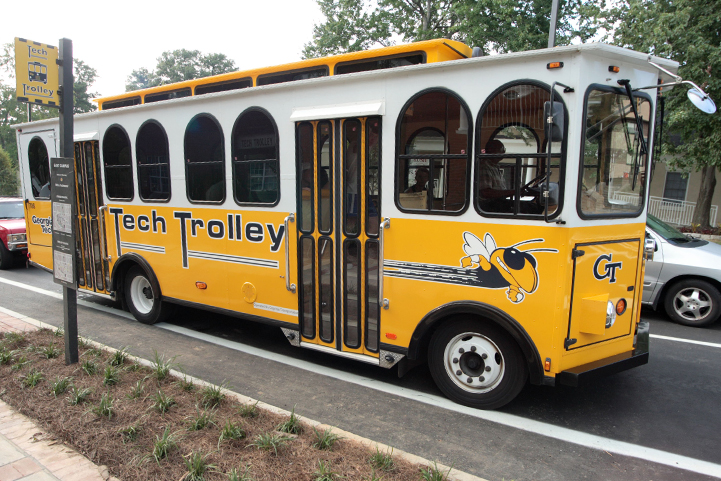When looking for time estimates for Stingers and Tech Trolleys, students have been met with disappointment. For the past two weeks as all they saw was the message, “Transit service operating normally but unable to provide times and locations. Apologies.”
This Tuesday marked the first time this semester that everything was back online, including the Nextbus services time estimates at bus stops and on mobile applications.
“I started seeing some initial problems certainly after we got back from Christmas Break and New Years started…there were times when one or two buses might go out and usually it was an equipment issue with the GPS unit in the vehicles. This was beyond that,” said David Williamson, the Associate Director for Transportation at Parking and Transportation Services (PTS).
The problem stemmed from the outdated nature of two main technologies used in vehicles, as well as the cellular industry continually making changes to network capacities. PTS worked in conjunction with OIT, as well as the manufacturers of the GPS devices on the buses, to get to the bottom of the problem and come up with a solution to it.
“The devices on the bus are basically a GPS receiver that calculates the current location and a cellular radio that takes that location and uses the cellular network to transport that information every 10 seconds or so to our servers that we operate. Our information then goes to Nextbus, which controls the display of the data received while also [making it] available for lots of other uses on campus,” said Dr. Russell Clark, the Associate Director of the Research Network Operations Center.
The entire cellular industry continues to introduce more and more devices into mobile telecommunications technology that use 3G and 4G networks. These introductions reduce the capacity of the 2G networks, and can be seen reflected in the performance of the technology on these buses, running on 2G, and their connections and data rates continually slowing down.
The temporary solution to this problem, as explained by Clark, involved code being put into the OIT servers that forces the devices to reset and reconnect to overcome the problems with connectivity.
“That’s the band-aid that’s going to get us through until we get these devices are replaced,” Clark said.
Because of how unpredictable the network connectivity can be, it is impossible to predict if problems with location services that occurred in the first two weeks of this semester will happen again in the near or distant future. This is why the plans for replacements of the technology have been accelerated to happen during either the next summer or fall semester.
“The technology has been in place for about nine years, [and] we’re in the process of trying to replace that equipment. In the fall semester, [we] started talking with a couple of different vendors about that…The technology is a little bit old, and it’s time to replace it,” Williamson said.
